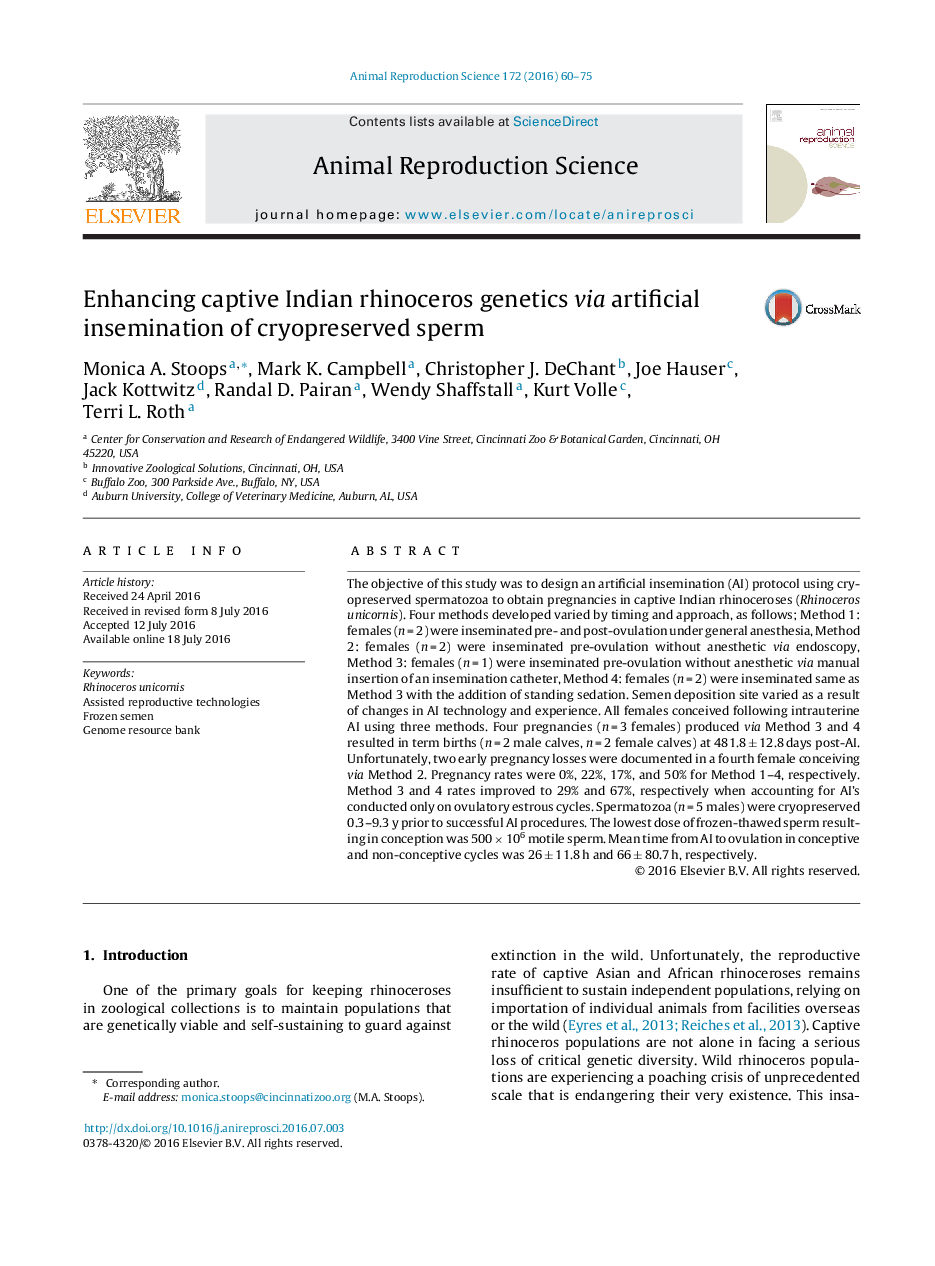| کد مقاله | کد نشریه | سال انتشار | مقاله انگلیسی | نسخه تمام متن |
|---|---|---|---|---|
| 2072425 | 1544705 | 2016 | 16 صفحه PDF | دانلود رایگان |
• Effective artificial insemination (AI) procedure developed in Indian rhinos using natural estrus.
• Produced multiple Indian rhino calves via AI of cryopreserved sperm.
• Established fertility of long-term cryopreserved Indian rhino sperm.
• Proved value of genome resource banks to enhance captive Indian rhino population.
The objective of this study was to design an artificial insemination (AI) protocol using cryopreserved spermatozoa to obtain pregnancies in captive Indian rhinoceroses (Rhinoceros unicornis). Four methods developed varied by timing and approach, as follows; Method 1: females (n = 2) were inseminated pre- and post-ovulation under general anesthesia, Method 2: females (n = 2) were inseminated pre-ovulation without anesthetic via endoscopy, Method 3: females (n = 1) were inseminated pre-ovulation without anesthetic via manual insertion of an insemination catheter, Method 4: females (n = 2) were inseminated same as Method 3 with the addition of standing sedation. Semen deposition site varied as a result of changes in AI technology and experience. All females conceived following intrauterine AI using three methods. Four pregnancies (n = 3 females) produced via Method 3 and 4 resulted in term births (n = 2 male calves, n = 2 female calves) at 481.8 ± 12.8 days post-AI. Unfortunately, two early pregnancy losses were documented in a fourth female conceiving via Method 2. Pregnancy rates were 0%, 22%, 17%, and 50% for Method 1–4, respectively. Method 3 and 4 rates improved to 29% and 67%, respectively when accounting for AI’s conducted only on ovulatory estrous cycles. Spermatozoa (n = 5 males) were cryopreserved 0.3–9.3 y prior to successful AI procedures. The lowest dose of frozen-thawed sperm resulting in conception was 500 × 106 motile sperm. Mean time from AI to ovulation in conceptive and non-conceptive cycles was 26 ± 11.8 h and 66 ± 80.7 h, respectively.
Journal: Animal Reproduction Science - Volume 172, September 2016, Pages 60–75
